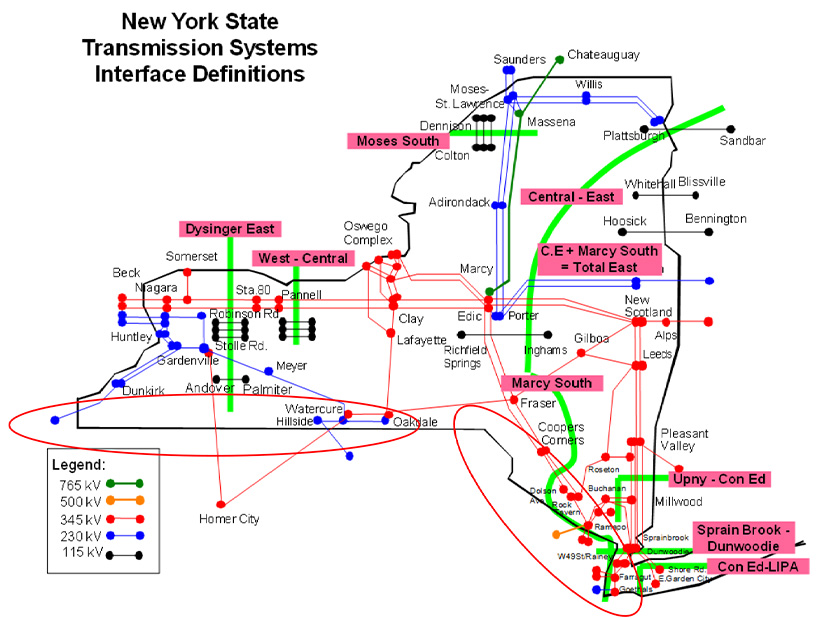Wide deployment of ground source and district heat pumps (GS/DHP) could reduce New York’s peak electric loads by up to 12 GW, but it’s unclear whether the increased cost of the systems would produce net savings, according to an analysis shared with the state Climate Action Council (CAC) last week.
The New York State Energy Research and Development Authority (NYSERDA) conducted the analysis as a follow-up to a case study last year that found a higher adoption of GS/DHP would result in a net increased cost versus air source heat pumps, which have lower coefficient of performance. “But we recognized there were a lot of uncertainties in that work, so we committed to coming back to the council to further explore some of those uncertainties,” said Carl Mas, director of NYSERDA’s Energy and Environmental Analysis Department.
The new analysis found that boosting the share of buildings with GS/DHP from 25% to 65% would increase building sector costs by up to $19 billion because the technologies are more expensive than air source heat pumps. The more efficient heat pumps would save the electric system between $15 billion and $23 billion in reduced firm capacity, battery storage and renewables — meaning a net increase of up to $4 billion or a net decrease of $4 billion.
“On balance, we see that the savings that can accrue from heat pumps are on the same order as the net costs,” Mas said, meaning that there is not “clear winner [but] significant opportunity.”
As a result, Mas said the CAC’s scoping plan should include “an adaptive policy process” to monitor the relative costs of air versus ground heat pumps over time.
“As we see the evolution of the grid, and what the costs of those are, we can over time decide what the best tradeoffs are going to be,” he said.
Buildings cause one-third of the state’s greenhouse gas emissions, making them central to meeting the goals of the state’s Climate Leadership and Community Protection Act (CLCPA).
Managed vs. Unmanaged Electrification
In addition to comparing ground and air source heat pumps, the new analysis also considered the tradeoffs between a “managed” electrification — more energy efficiency and smart devices to manage peaks — versus an “unmanaged” electrification with less EE and smart devices. Managed building electrification would see building stock experience “significant levels of deep energy efficiency,” while unmanaged load growth would see “fewer deep shell retrofits,” Mas said.
NYSERDA projects peak load, currently 30 GW, will grow to 40 GW by 2050 under a managed scenario, as the state transitions from a summer- to a winter-peaking system. With unmanaged electrification, the peak would nearly double to 58 GW, but that would be cut by as much as 12 GW with higher GS/DHP penetration. The conclusion? More GS/DHP would have “a significant impact if we don’t realize the high levels of energy efficiency and peak load management” under a managed transition, Mas said.
A managed electrification would have a cost of around $80 billion, while an unmanaged system would see costs at least $27 billion higher because of a need for 14 GW of additional firm capacity and battery storage and 4 GW of incremental renewable generation. Uncertainty over distribution system impacts could add another $14 billion to the price tag, Mas said.
Mas said the analysis did affirm that improving building energy efficiency is critical for achieving CLCPA emissions reductions. But with the added costs of installing GS/DHP systems estimated at up to $19 billion, he said, there is not a clear case for recommending the more efficient systems now.
“We see the ground source heat pumps and district heat pumps have the potential [to reduce] the development risks that would come with having to build additional gigawatts of clean firm resources and the other distribution and transmission infrastructure that come from it,” he said. “And that’s what we’re recommending: that there be a continued effort to monitor and evaluate the relative … costs of ground source heat pumps and district heating, compared to how the electric system actually evolves over time.”
Comments
New York Public Service Commission Chair Rory Christian said the study “hit the nail on the head” when highlighting the significance of energy efficiency. “If you can be much more efficient in how our buildings are built and operate, then the need to build up bigger systems … is diminished significantly.”
Anne Reynolds, executive director for the Alliance of Clean Energy New York, asked whether there was significant difference in the costs of heating systems in urban versus suburban areas.
Mas responded that there were “different economics depending on the environment.” He noted that the analysis only used averages, saying there “certainly needs to be a specific utility-by-utility analysis for their specific service territories.”
Next Steps
The CAC will reconvene on Tuesday to give another integration analysis update and discuss any remaining feedback topics, including climate justice, before assembling a full draft scoping plan.
The council plans to spend November discussing redlines to the draft plan, then spend December making decisions on outstanding items, with a vote on a final scoping plan set for Dec. 19.


